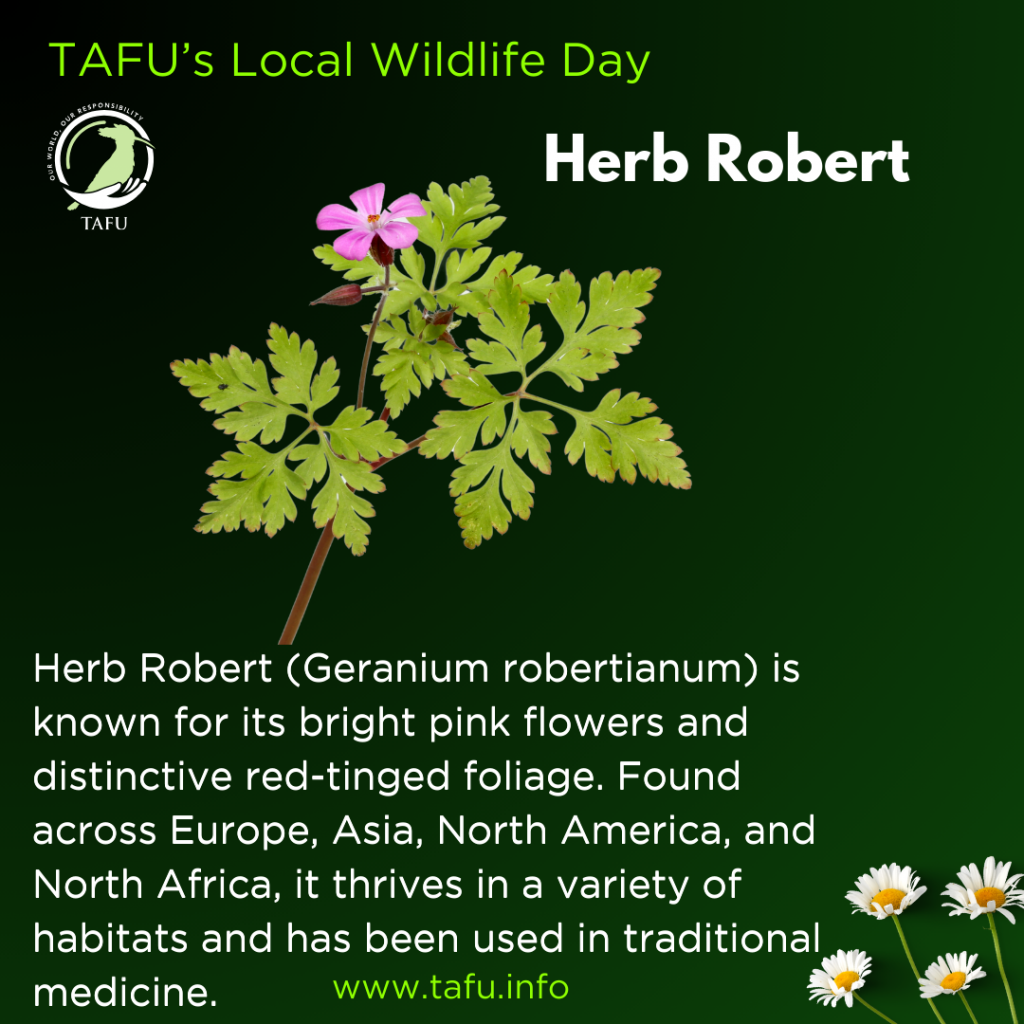Herb Robert
As part of the countdown to TAFU’s Local Wildlife Day on the 11th of July – Species no. 35.
Stay tuned – 8 more days and 8 more species until then!
Herb Robert (Geranium robertianum) is a delicate, annual to biennial plant that typically grows 20-40 cm in height. It is easily identifiable by its deeply divided, fern-like leaves that often turn red as the plant matures. The small, bright pink, five-petaled flowers, which appear from spring to autumn, are another distinctive feature of this plant.
Herb Robert is highly adaptable and can be found in a wide range of habitats, including woodlands, hedgerows, gardens, and rocky areas. It prefers shady, moist environments and can often be seen growing in crevices and along paths. Despite its preference for shade, it can also tolerate sunnier locations, making it a versatile plant.
Herb Robert has a long history of use in traditional medicine. Herb Robert has been used for its astringent, antibacterial, and anti-inflammatory properties. It has been applied to wounds to promote healing and used internally to treat gastrointestinal issues, respiratory problems, and to support overall immune function. The plant’s fresh leaves can be crushed and applied directly to the skin, while teas and tinctures are made from dried leaves and stems.
Herb Robert also plays a role in supporting wildlife. Its flowers attract a variety of pollinators, including bees and butterflies. Additionally, it serves as a larval food plant for certain species of moths. Hence, it is an incredibly important part of the ecosystem.
Herb Robert can be an aggressive self-seeder, spreading quickly in suitable habitats. The seeds are ejected explosively from the ripe seed capsules, ensuring wide dispersal.
Leaving sections of your green spaces undisturbed, allowing this and other native plants to thrive can be incredibly helpful. Avoiding the use of herbicides can help protect Herb Robert and the pollinators that depend on it.

